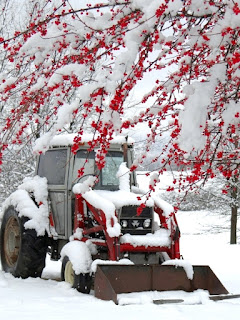Compulsive gardeners can get quite morose in the dead of winter. It’s one thing to pour over the new seed catalogs, dreaming about how those perfect flowers will look in your garden. But what gardeners really want is to DO something. Create, grow, nurture. We are just itching to get out there.
In all my years of gardening, I had never heard of winter sowing until last fall. A friend bequeathed me with a garbage bag full of recycled jugs, bottles, clamshells, and jars. She said I could use them like mini-greenhouses for germinating my seedlings. What? How?
She grabbed a clear clamshell (plastic packaging) that once held a sandwich and instructed me to get some potting soil and some seeds. She cut some holes in the bottom and poked holes in the top. She wet the soil and filled the clamshell half full. I sprinkled some sunflower seeds on top, added a bit more soil, and sprayed it with water. We set it in a large planter on the deck. And that’s it. She said that come spring, the seeds will sprout at their own pace with virtually no effort on my part.
Well…. let me tell you that I suddenly envisioned the possibilities. No overloaded window sills, no seedling rotations to ensure they all get some sun. No angst about who gets to be planted in February… or March… or April. No dilemma about whether or not to lay out the bucks for lighting, heat mats, trays, and pots.
Could it be true?
So I dove right in and started to research. The term, “winter sowing” was coined by Trudi Davidoff in the early '2000s. She was looking for a solution to a problem. Too many seeds, too little space. It occurred to her that Mother Nature sows her seeds outside in winter, so perhaps she could do the same.
The idea of winter sowing is not new.
Seed packets will sometimes instruct you to direct sow outdoors in the fall. These plants are adapted to winter conditions and have evolved to lay in wait in the cold before germinating in the spring. But the life of these seeds is precarious. Many are fated to fail due to, for example, predation or heavy spring rains.
Winter sowing changes the game. By sowing the seeds in a confined environment, they are protected from the vagaries of nature. Will it work with all seeds? No. It will NOT work for plants that come from tropical areas where they would never be exposed to cold. It WILL work especially well for seeds that require a period of cold stratification to come out of dormancy.
Read the six steps of winter sowing in an article by seed expert Barbara Schaefer: https://gardensbybarby.ca/winter-sowing-in-six-easy-steps/




